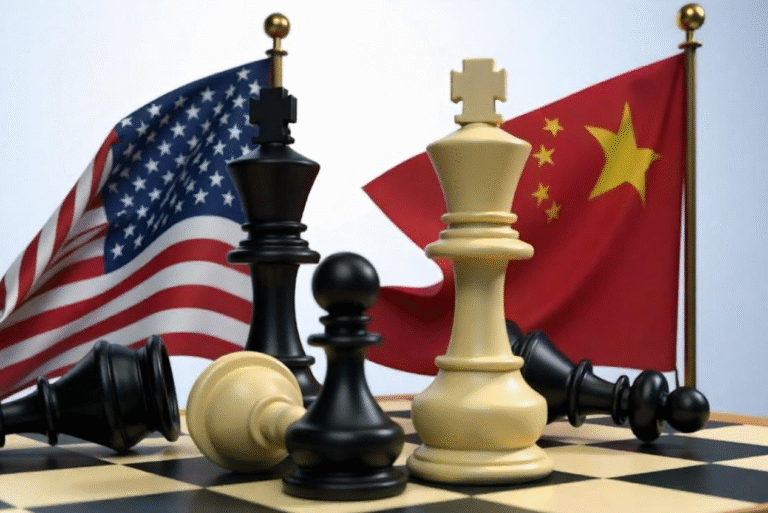The strategic rivalry between the United States and China is one of the defining global challenges of the 21st century. While many believe that China is steadily rising and the U.S. is pulling back—especially during the Trump administration—this perception often overlooks the deeper strategic intentions behind each country’s behavior.
China’s Global Strategy: Power Through Perception
Under President Xi Jinping, China has aimed to expand its influence economically, politically, and culturally. In 2017, at the World Economic Forum in Davos, Xi positioned China as a potential global leader, presenting an image of openness and stability in contrast to Western unpredictability.
But is China really prepared to take the global stage?
In reality, China is still consolidating its internal strength—economically, politically, and militarily. Its global leadership narrative often relies more on strategic optics than on actual readiness. China’s rise aligns with Sun Tzu’s philosophy of “winning without fighting”—shaping perception, projecting confidence, and encouraging others to accept its growing influence as inevitable.
Initiatives like the Belt and Road project have extended China’s presence across Asia, Africa, and parts of Europe. Yet behind this outreach lie challenges: slowing growth, demographic pressures, internal dissent, and regional tensions. Real strength is not always what is portrayed.
The U.S. Under Trump: Retreat or Strategic Reset?
During Donald Trump’s presidency, many observers interpreted his “America First” approach as a retreat from global leadership. His administration prioritized the home economy, cut back on foreign aid, and retracted several international accords.
These actions, nevertheless, weren’t always indicative of weakness. Trump aimed to rebalance America’s role in the world, prioritizing national sovereignty, military readiness, and economic self-reliance over multilateralism. His strategy was more about recalibrating U.S. power than abandoning it.
This approach marked a shift in tone, not a departure from America’s long-standing strategic goal: maintaining global dominance. Both Democratic and Republican administrations have historically shared this objective, even if they differed in their methods. Trump’s blunt language made these goals more transparent.
Despite criticism, the United States remains unmatched in global influence across key domains: military strength, technological innovation, financial power, and soft power through education, culture, and alliances.
A Clash of Systems and Strategies
The U.S.-China rivalry is more than a competition between two superpowers—it’s a strategic clash of political systems, global visions, and leadership styles.
- China seeks to shape a new world order where economic leverage translates into influence, projecting itself as a reliable, stable alternative to the West.
- The U.S., especially under Trump, has aimed to reassert control by reinforcing borders, protecting industries, and reducing dependency on foreign systems.
Each country uses a different approach—China through persuasion and perception; the U.S. through power projection and realignment.
Conclusion: A Complex Rivalry Beyond the Headlines
The surface-level narrative—that China is rising and the U.S. is in decline—is overly simplistic. Both nations are engaged in a calculated and evolving contest for global influence. While China builds its image and networks, the U.S. recalibrates its global role without surrendering its strategic edge.
Understanding this rivalry requires more than headlines. It demands attention to long-term goals, political philosophies, and national identities. For policymakers, analysts, and citizens worldwide, recognizing the true nature of U.S.–China competition is essential to navigating the future of international relations.


